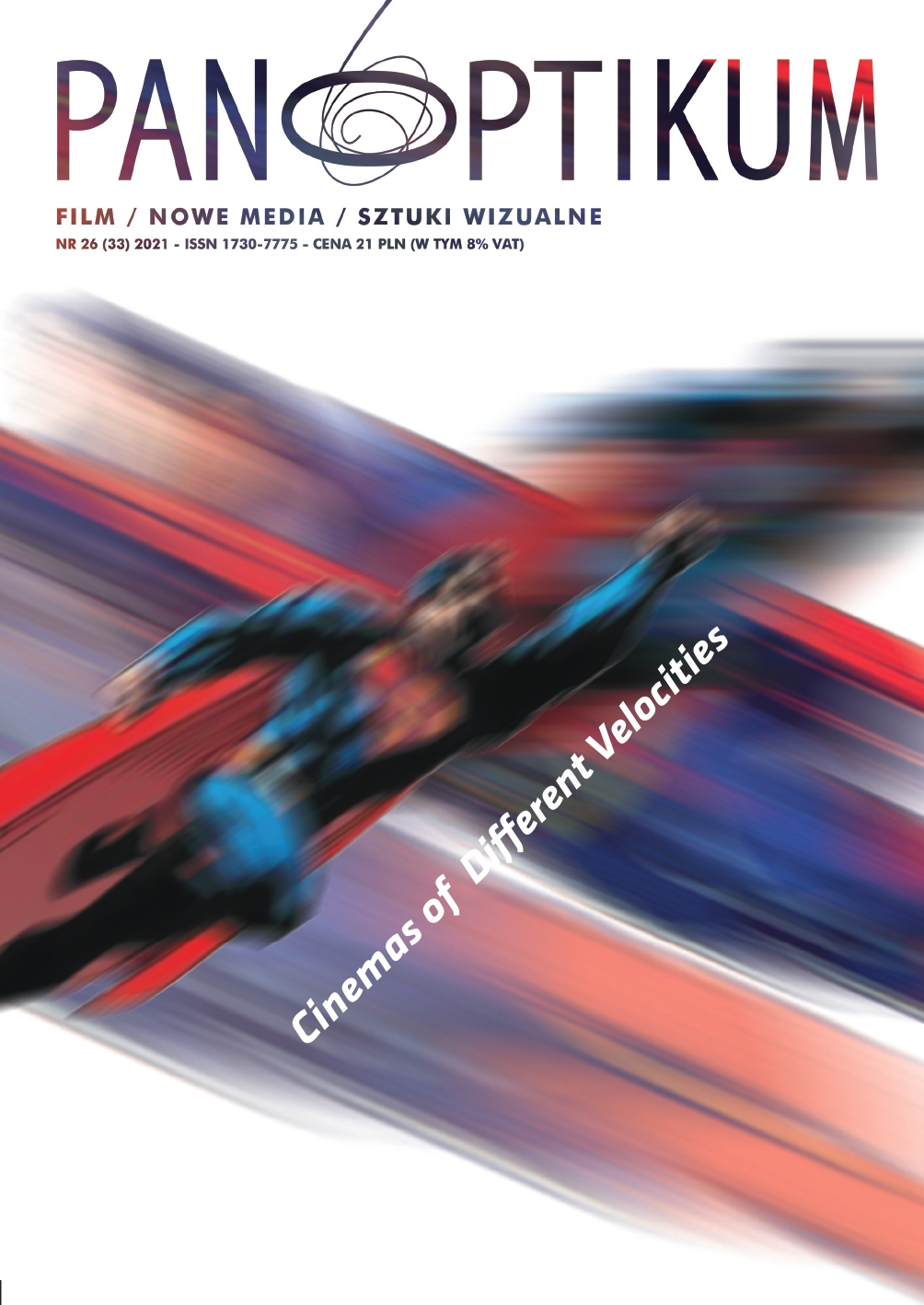How Fast is Furious The Discourse of Fast Cinema in Question
DOI:
https://doi.org/10.26881/pan.2021.26.02Keywords:
cinematic temporality, “fast” cinema, remediation, slowmotion, spectatorshipAbstract
Considered in its articulation with an idea of “slow” cinema, the label “fast cinema” suggests three characteristics: fast-paced action, hyperkinetic cinematic style, and irreflexive consumption. Not only does fast cinema suggest these three characteristics, however, it also suggests that they directly correspond to each other so that, in a “fast” film, fast-paced action would be seamlessly rendered through “fast” cinematic enunciation and this rendering would necessarily result in an escapist, ready-to-consume film product. It is more by this correspondence, I think, than by any of these elements on its own that a certain understanding of “fast” cinema is established.
Against this understanding, through a variety of contrasting examples, the article argues that the impression of fastness and that of slowness are both the matter of a tension between different temporalities and a complex combination of heterogeneous film elements, and that the articulation of “fast” and “slow” cinema itself depends less on the formal characteristics of different kinds of film than on a disciplinary understanding of spectatorship, which pretends to derive from these formal characteristics different and unequal forms of film experience.
Downloads
References
Ballard, J. G. (2010 [1973]), Crash. New York: Harper.
Beltrán, M. (2013). Fast and Bilingual: “Fast & Furious” and the Latinization of Racelessness. “Cinema Journal”, 53.1.
Bolter, J. D., Grusin, R. (1996). Remediation. “Configurations”, 4.3.
Bordwell, D. (2002). Intensified Continuity: Visual Style in Contemporary American Film. “Film Quarterly”, 55.3.
Dreux, E. (2018). Où la charrue tire ses boeufs: Du movement inversé dans le cinéma comique et burlesque. In Blümlinger, Ch., Lavin, M. (eds.) Geste filmé, gestes filmiques. Paris: Mimesis.
DeLillo, D. (2003). Cosmopolis. New York, London: Scribner.
De Luca, T. (2016). Slow Time, Visible Cinema: Duration, Experience, and Spectatorship. “Cinema Journal”, 56.1.
Doane, M. A. (2002). The Emergence of Cinematic Time: Modernity, Contingency, and the Archive. Cambridge: Harvard University Press, 2002.
Eribon, D. (2014). La Société comme Verdict. Paris: Flammarion.
Flanagan, M. (2008). Towards an Aesthetic of Slow in Contemporary Cinema. “16:9”, 29.6.
Grønstad, A. (2016). Film and the Ethical Imagination. London: Palgrave Macmillan.
Herr, M. (1978 [1977]). Dispatches. New York: Picador. Hunter, S., Boyle, D. (2011). 28 Days Later: An Interview with Danny Boyle. In Dunham, B. (ed.) Danny Boyle: Interviews. Jackson: University Press of Mississippi.
Maclean, E. (2021). Fast Paced and Action Packed: The Temporality of Masculinity in Shooter Videogames. Proceedings of DiGRA Australia.
Connolly, M. (2016). Conceptualising the Cinematic in Contemporary Art. In Bordina, A., Estremo, V., Federici, F. (eds.) Extended Temporalities: Transient Visions in the Museum and in Art. Milan: Mimesis International.
Mayne, J. (1993). Cinema and Spectatorship. London and New York: Routledge.
Mroz, M. (2012). Temporality and Film Analysis. Edinburgh: Edinburgh University Press.
Nagib, L. (2016). The Politics of Slowness and the Traps of Modernity. In De Luca, T., Barradas, N. eds. Slow Cinema. Edinburgh: Edinburgh University Press.
Palmer, L. (2012) . Cranked Masculinity: Hypermediation in Digital Action Cinema. «Cinema Journal», 51.4.
Rancière, J. (2004). The Politics of Aesthetics: The Distribution of the Sensible. London: Continuum.
Rancière, J. (2006). Film Fables. trans. Battista, E. Oxford: Berg.
Rancière, J. (2009) The Emancipated Spectator. trans. Elliott, G. London: Verso.
Rancière, J. (2010). ed. and trans. Corcoran, S. Dissensus: On Politics and Aesthetics. London: Continuum.
Rascaroli, L. (2020). Time/Frame: On Cinematic Duration. In Murphy, J., Rascaroli, L. (eds.) Theorizing Film Through Contemporary Art: Expanding Cinema. Amsterdam: Amsterdam University Press.
Shaviro, S. (2010). Post-cinematic Affect. The Bothy, Deershot Lodge: O. Books.
Thompson, L. (2011). In Praise of Speed: The Value of Velocity in Contemporary Cinema. “Dandelion: Postgraduate Arts Journal & Research Network”, 2.1.

 Academic Scientific Journals
Academic Scientific Journals









